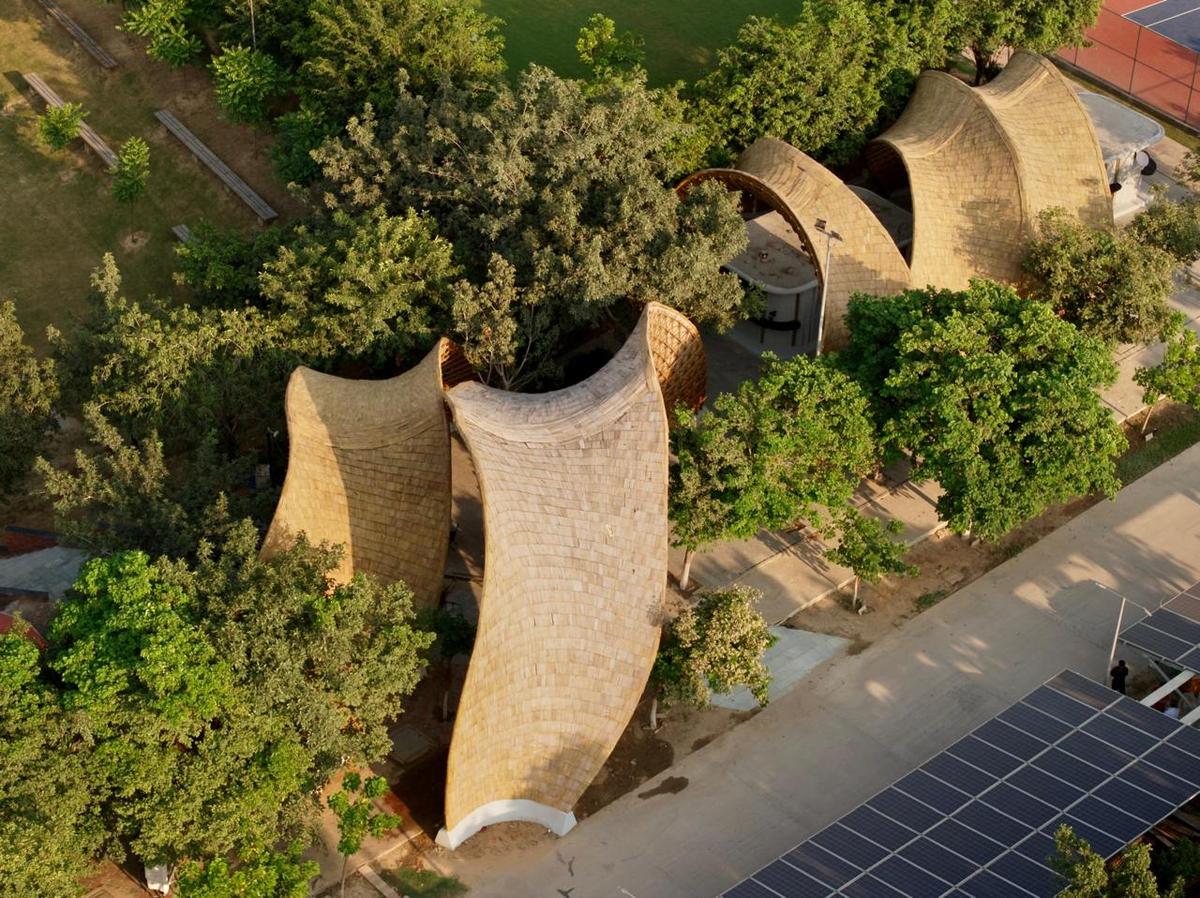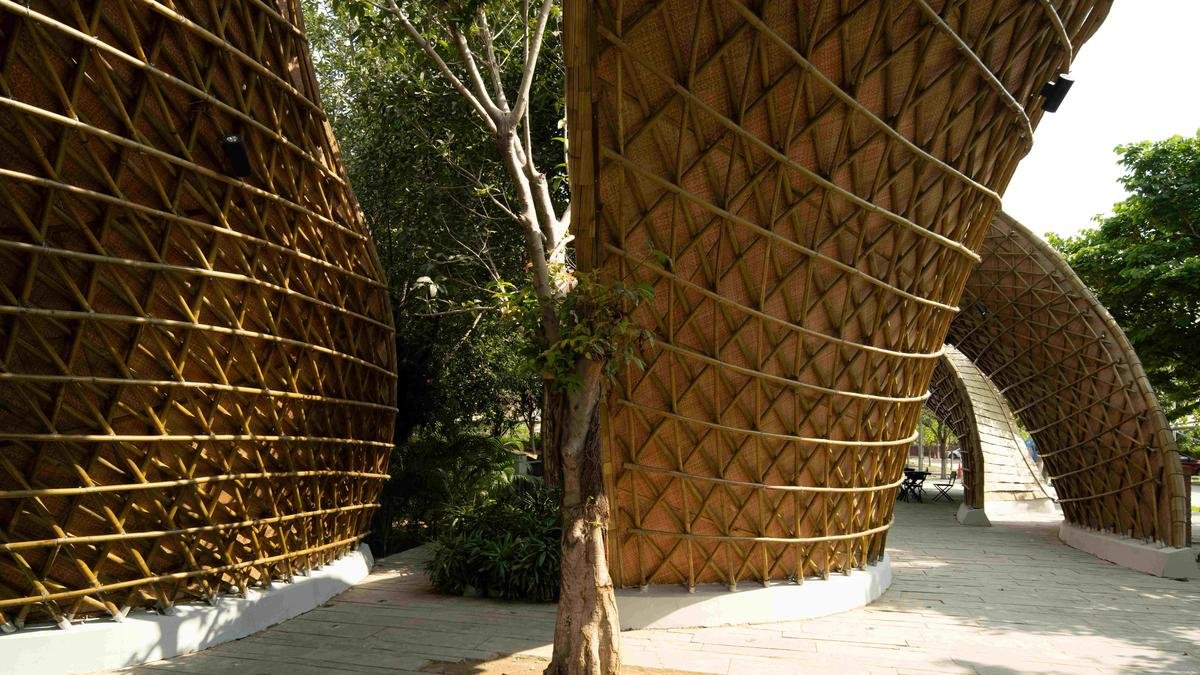
A view of The Hungry Caterpillar project.
Bamboo, with its flexibility and strength-to-weight ratio (making it as strong as steel in tension), is regarded as one of the finest materials for construction. Apoorva Shroff had this in mind when she started The Hungry Caterpillar at Ashoka University. The project features a food street designed with 3D-printed modular kitchens that reduce waste, recycled plastic furniture, and bamboo canopies inspired by nature’s geometry.
An acclaimed Indian architect with over 20 years of experience across the U.S. and Asia, Shroff launched her own firm, Lyth, in 2022, while also mentoring at Mumbai’s BSSA. Edited excerpts from an interview:

A view of The Hungry Caterpillar project.
What are the ecological and social impacts of using bamboo as a primary material in public or semi-public structures, factoring in life cycle, local sourcing, artisan labour, maintenance, and end-of-life reuse?
In the case of The HungryCaterpillar, the treated bamboo used helped sequester nearly 350 tons of CO₂, which is a direct positive impact. Unlike metals or concrete, which have high embodied energy and are difficult to recycle at end-of-life, bamboo can be repurposed, composted, or safely returned to the soil. Socially, bamboo construction relies on craftsmanship and hands-on skill, which opens opportunities for artisan labour. What excites me is the dialogue it fosters, between designers, artisans, and sustainability experts, which makes the process as valuable as the outcome.
How do designs like the Caterpillar’s double-curved bamboo shells or the Koodaaram’s (the acclaimed pavilion at Kochi Biennale’s 2018 edition) porous yet protective form mediate between shelter and openness?
Both structures explore the delicate balance between protection and permeability. The double-curved shells of the Caterpillar create shaded, cocoon-like interiors while remaining porous enough to let in dappled light, air movement, and a sense of connection with the surrounding trees. In both cases, the form symbolises inclusivity: creating spaces that invite gathering and reflection, yet without severing ties to the outside world.

A view of The Hungry Caterpillar project.
Tell us more about the inspiration, the quality of bamboo used and longevity?
The project took shape from a striking image that stayed with me after my first visit to the site: a cocoon tucked into the green canopy, reminiscent of a caterpillar feeding securely, sheltered and in the process of becoming. Bamboo was the perfect medium to bring this vision alive. Its versatility allows for bold, expressive geometries while keeping the footprint light on the planet.
What has been the response?
From the outset, Ashoka University has been encouraging and aligned with the vision of creating a student-centric space that champions sustainability.
What stands out for you from other examples of bamboo installations (Koodaaram, or designer Sandeep Sangaru’s work)? How can other architects be encouraged to follow suit?
At Kochi’s Cabral Yard, the bamboo pavilion became a symbol of community and culture, transforming an ordinary space into an iconic Biennale experience. Sandeep Sangaru’s work, on the other hand, demonstrates the material’s adaptability to furniture and product design, proving that bamboo can be both local and contemporary at once. The more we create opportunities for collaboration with engineers, artisans, and sustainability experts, the more confidence the profession will gain in embracing it as a mainstream material.
Published – September 26, 2025 05:28 pm IST
